How to Create a DIY Hydroponic System for Growing Strawberries
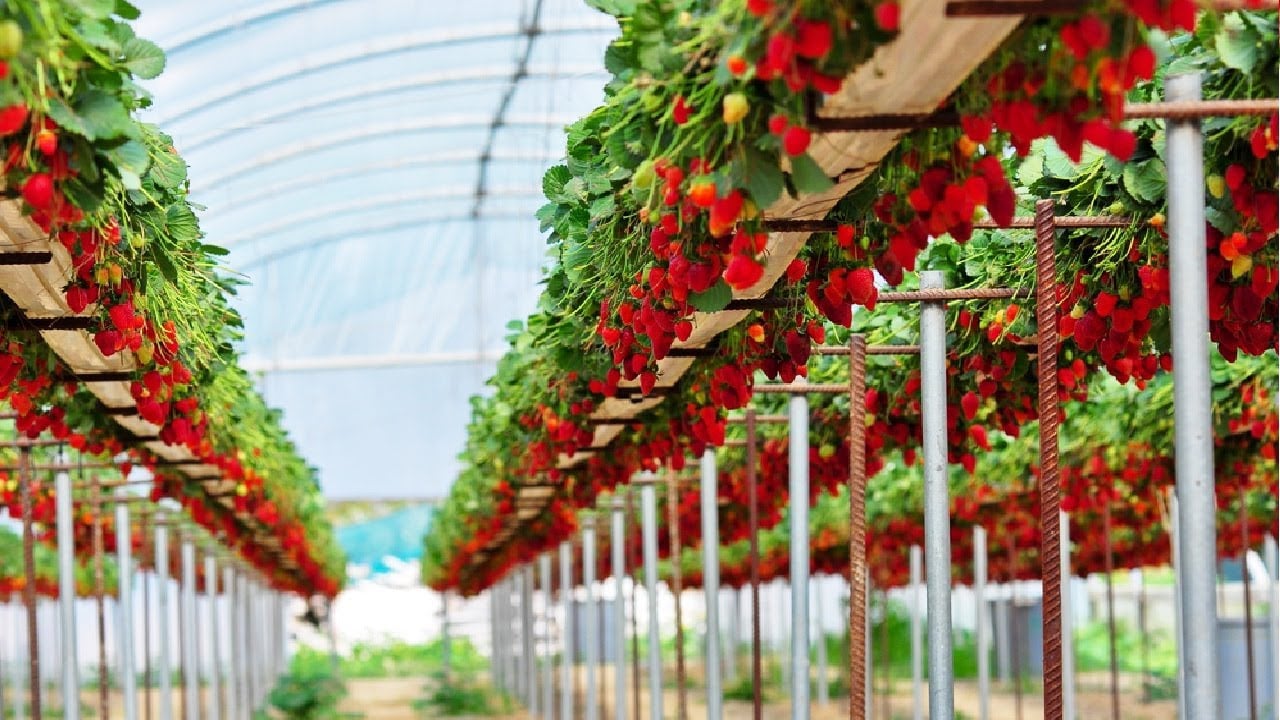
Table of Contents
Strawberries are everyone’s favorite, beginning from ice cream to yogurts or from milkshakes to the toppings of your homemade pies; it fits with everything. It is the love for the berries; people have now resorted to growing them in their homes. And amidst the evolving practices, growing it hydroponically has emerged as the latest trend.
Growing Strawberries in a Hydroponic culture does not have soils involved and instead is grown in a nutrient solution that is water-based but requires several checks and balances in a definite proportion for the best growth. Although, if you are a beginner and planning to set off on your journey of Hydroponic Strawberries, we have established a complete DIY guide for you. What is it, how it’s done, and everything you must know?
What is Hydroponics?
In simple terms, it is the process of growing plants without the involvement of soil. It is part of the hydro culture family, where the traditional plant growing method is eliminated with a nutrient-rich water solvent in an ecosystem where the plants will grow better than in that with the soil. It is due to the Hydroponic, thanks to technological advancement, things have gotten so easy that it is now possible to have your desired fruits and vegetables at your home around the year.
Suppose you are a beginner or even have experience of years of traditional gardening. Hydroponic might seem alien to you. However, by adhering to the basic techniques and principles, you will find the process hassle-free, less time-consuming, and above all, way more productive in terms of yield and purity, given the process involved in it. This gardening technique can be applied to grow any plants or fruits in any season.
How Does the Hydroponic Technique Works?
The system is entirely driven by manipulating and controlling the system where the plant is being grown. It depends upon a range of matters, including temperature, and pH balance, besides ensuring the maximum exposure to nutrients and water.
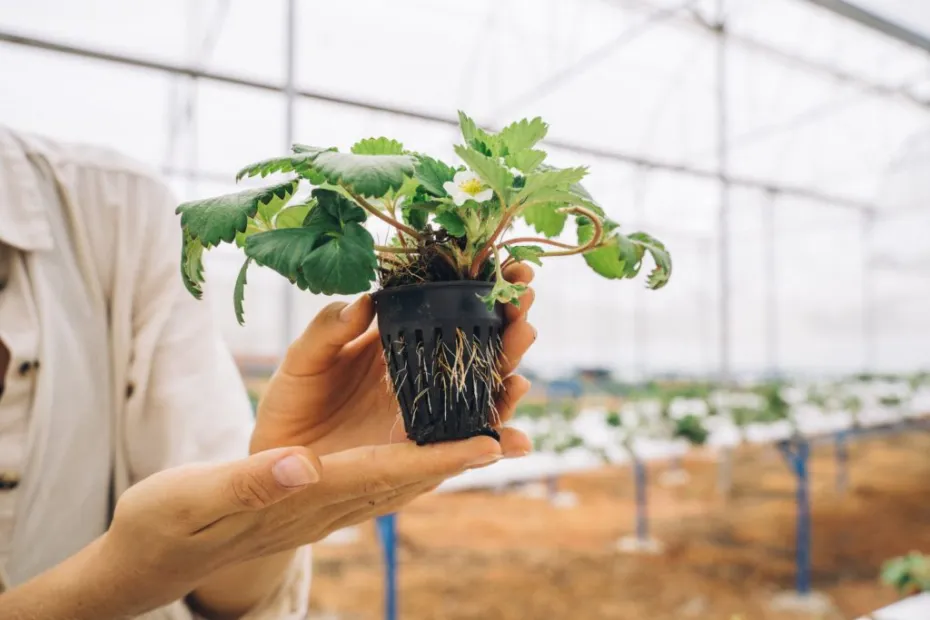
In one of the many hydroponics setups, plants are systematically placed in the net pots in a fashion that the roots of your strawberry plant easily pass through the holes and reach the reservoir containing water and nutrients right below. After that, a growing medium is placed in the net pots in order to make sure the plants hold upright.
Once the set-up part is done, water and all the required nutrients are then made to flow through a networked tube system, where a submersible water pump moves the water and drains out the reservoir when needed.
In short, the entire mechanics of hydroponics work together to provide everything the plants (strawberries) essentially require to grow in an indoor or outdoor environment and requires very little intervention on the part of the gardener, including for the Hydroponic Strawberries.
How to Grow DIY Hydroponic Strawberries
1. Nutrient Film Technique System (NFT)
NFT is the most common type among all the hydroponic techniques to grow strawberries. Under this method, the net potsare placed in a specific manner that makes the roots hang freely in the ‘root zone.’
The method also provides the option of reusing the nutrient solution again. However, it is essentially required to keep the subtle arrangements of alternative power supply in case the main current line is disrupted.
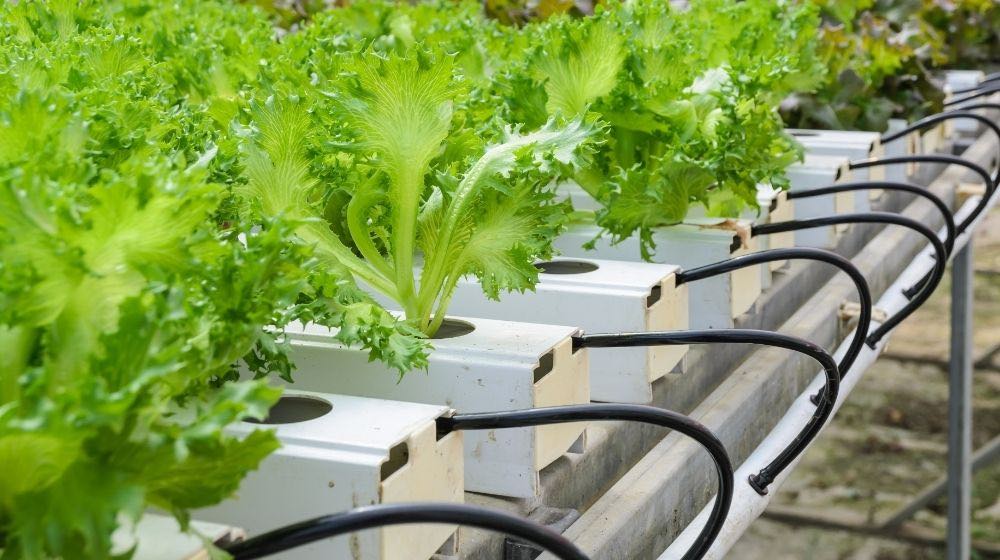
2. Ebb and Flow System
This technique is very similar to that of NFT. The arrangements of the entire Hydroponics system are made such that the plant’s roots will remain submerged in the medium, where a large amount of nutrient solution is pumped in. The entire system is purposefully arranged in a cycle that lasts for a few minutes altogether. After a while, the entire solution (flooded in the growing medium) is drained out naturally.
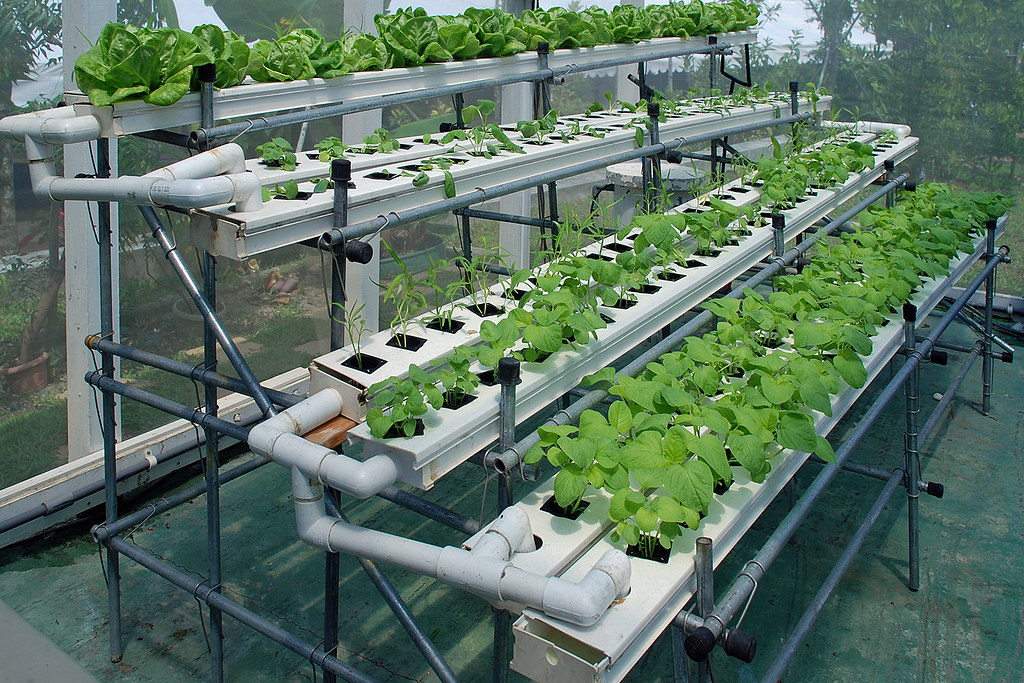
3. Drip System
In this growing technique for Hydroponic Strawberries, the nutrient-rich reservoir, which is aerated, pumps the solution through a network of tubes to individual plants. The drip System ensures the solution is dripped slowly into the media, where the entire root area is well surrounded and helps in keeping the plant moist, ensuring that it is well-nourished.
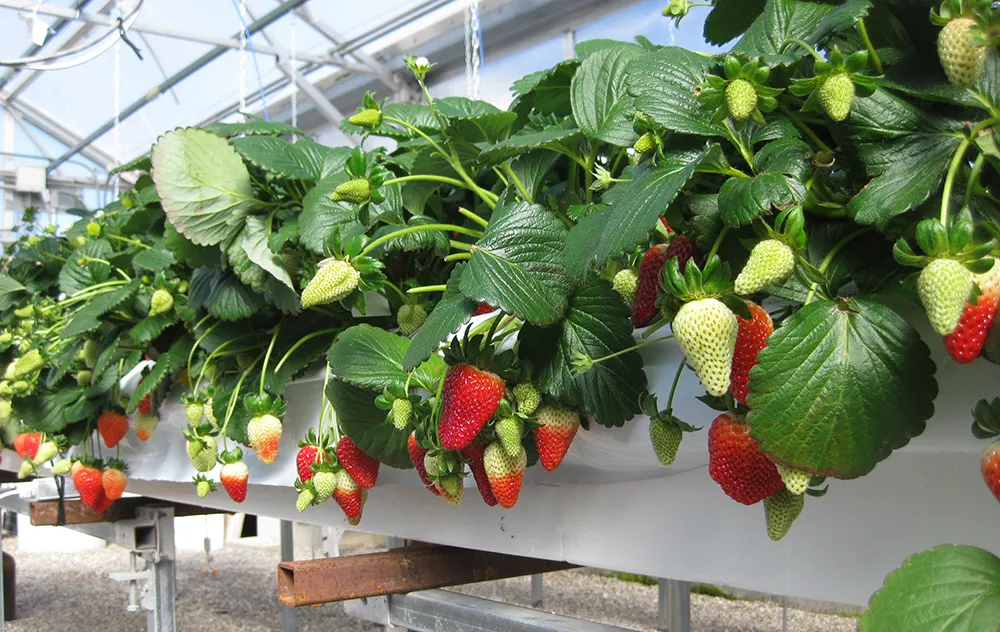
4. Deep Water Culture System
Also known as the DWC system, it is one of the easiest and most popular methods of hydroponics. Under this system, the holding plants are dangled over a deep reservoir of the oxygen-rich nutrient solution. Alike any other system in Hydroponics, Strawberries’ growing roots of the plants is submerged in the solution, providing them much-needed access to nutrients, water, and oxygen. DWC is regarded as the purest form of hydroponics in practice to grow any plants.
Given the roots of the plants are made to suspend in the water all the time, it ensures enough oxygen supply to the plant’s roots, failing to which the plants will drown in the solution. The entire dynamics of the arrangement are designed in a fashion that the air stone is connected to the air pump towards the bottom of the reservoir to supply oxygen to the entire system. The bubbles from the air stone also facilitate the circulation of the nutrient solution.
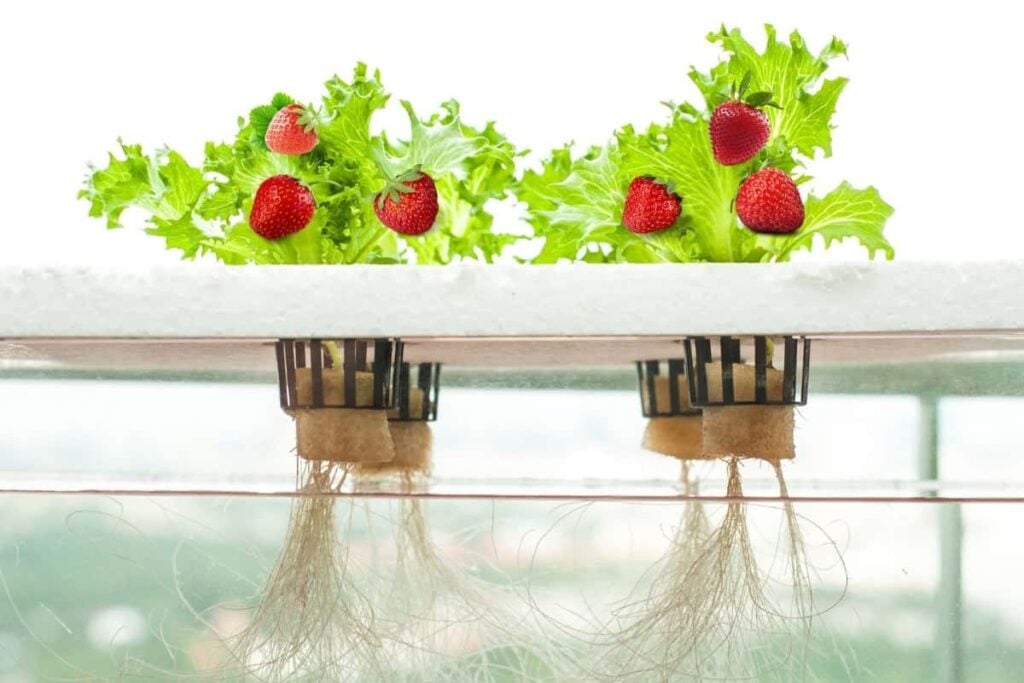
5. Wick System
Under this, the plants are nestled in a growing media on a tray on top of the reservoir, which contains a water solution with dissolved nutrients. Wicks travel from the reservoir to the growing tray. Furthermore, water and nutrients flow up the wick and saturate the growing media around the roots of the plants. These wicks are self-designed and can easily be made by rope or string. Out of all systems practising hydroponics, this is most simple. The Wick system doesn’t require pumps to function, which makes it suitable for region that has poor or unreliable electricity connectivity.
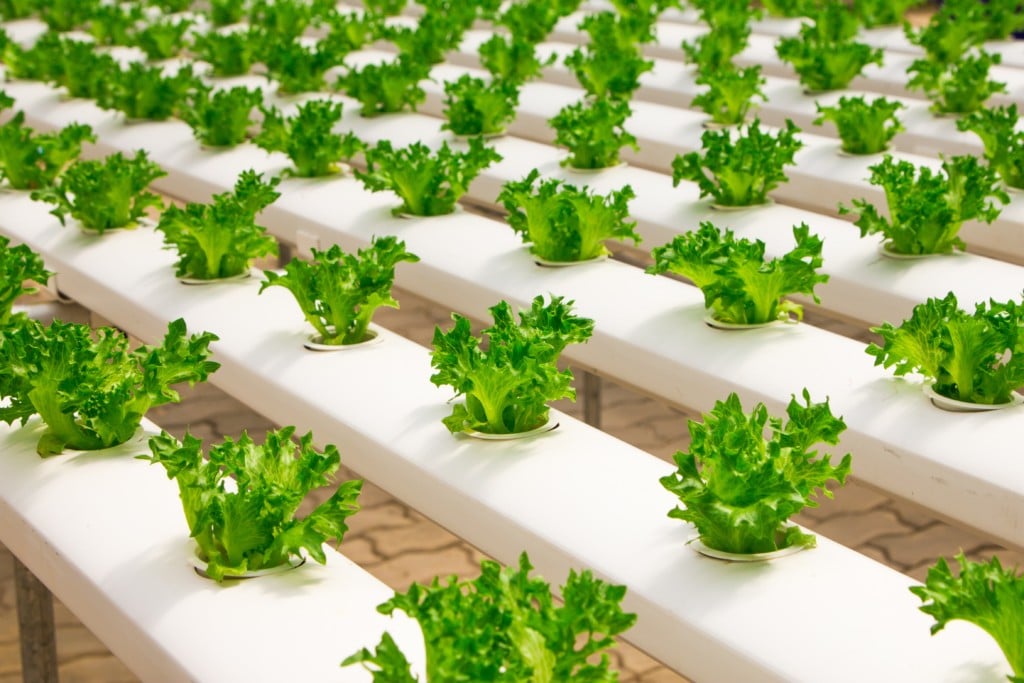
6. Aeroponics System
This system helps plants suspend in the air and provides the naked roots with exposure to essential nutritious elements. Aeroponics systems are enclosed ecosystems with cubes and towers that hold the potential to hold a multitude of plants at once. Water and nutrients, like every other process of growing Hydroponics Strawberries, are stored in a reservoir from where it is pumped to a nozzle that helps the atomisation of the solution and later distributes it as a fine mist.
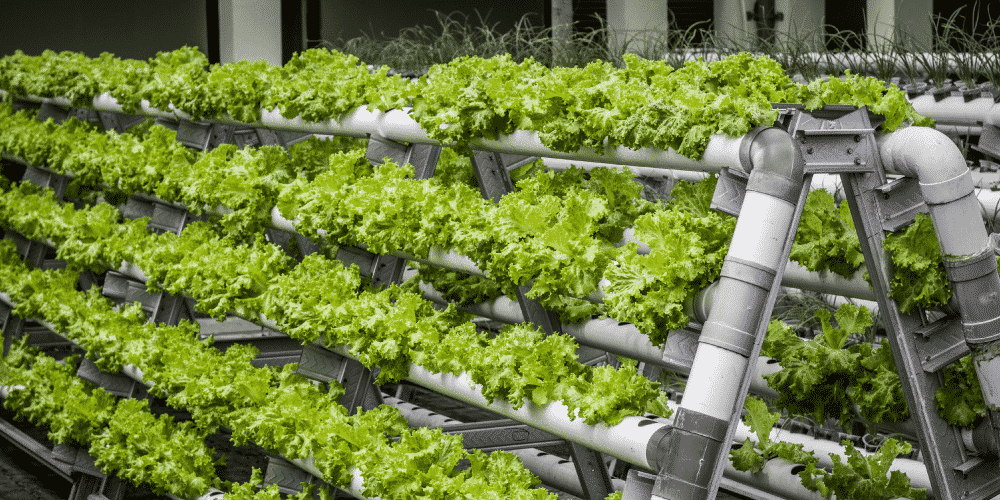
Benefits of ‘Hydroponic Strawberries’
There are several benefits while growing Strawberries Hydroponically over the traditional method. Moderating its growth in a controlled environment helps its from coming into unwanted exposure and boosts the growth in the best way possible.
Some of its advantages are listed out below:
- Reduces the usage of water: Taking the hydroponic route of growing the strawberries helps the re-usage of water that, helps to save plenty of water over than in the traditional mode.
- Posts: Hydroponic mode of growing the strawberries helps to eliminate the threat of pests owing to the absence of soil in the process.
- Planting: Making use of the hydroponic technique, the strawberry plant containers can well be stacked in a vertical fashion, which helps in saving space and makes it easier to tend against the cultivation of strawberries on the ground. The technique also helps in amping the density of plants in the area.
- Costing: Hydroponics helps in lowering the budget to an enormous extent in comparison to going with the traditional method of growing strawberries. Besides, it also helps in expanding the business for being year all round into the service. Commercial farmers are the eventual winners owing to the quality of the berries they get.
- Yield: Hydroponic Strawberries can be produced all year round, unlike the traditional soil growing method that has a specific time slot to grow in the year. Growing strawberries hydroponically also mitigates the threat of pest attacks and also has nil impact on external weather-related parameters.
Key Elements in ‘Hydroponic Strawberries’ Farming
1. Supplies
It is extremely vital to keep all the products required to grow the strawberries in check associated with what methods you are going to carry forward. Among the essential supplies, ‘trough’ is the key element that needs to be given precise care. It needs to be big enough in order to hold the nutrient solution giving proper exposure to the plants.
2. Substrate
There is an essential requirement for good root aeration for strawberries to grow. Therefore, it is highly recommended that strawberries be grown in a substrate that can provide a minimum of 15 percent porosity in the zone where the root is placed.
3. Environmental Control
It is essentially required to have a suitable environment for the strawberries to grow; despite the fact that they are being grown indoors, environmental parameters need to be maintained. Moreover, concerning proper environmental growth, there involves a few parameters, which include the following:
- Temperature- Low night temperatures massively impact the flavor of the strawberries, so it is highly recommended to follow different temperatures during the day and night time; for the day, it is recommended to maintain the temperature between 18-24 degree centigrade, while during the night, it is required to retain the temperature as low as 10-13 degree centigrade.
- Humidity- It is essentially required to have a proper relative humidity for growing strawberries. Calcium uptake is adversely impacted when the humidity is low, which affects the fruit quality. It is essential to maintain the relative air humidity falling in the band of 60-75 percent, while a nighttime high humidity benefits the nutrient movement.
- Lighting- Hydroponics Strawberry growth requires a massive amount of lighting to ensure its proper growth. The subtle arrangements are required to meet the need for at least 14-16 hours of lighting a day in its ecosystem.
Conclusion
With the evolving technological advancements, the process of Hydroponics has come as a massive boon. It is vital to adhere to the established required practices to ensure massive yields.
Commercial practitioners are extensively involved in hydroponics farming to grow other plants, including tomatoes, watermelon, cantaloupe, grapes, and more.
Hydroponics is emerging as a widely adaptive practice that is perfectly safe for human intake.
If you are looking to set off on a new journey in gardening ahead and giving your house a fine touch, Hydroponics is the answer, and relish the love of Strawberries/fruits all year long.
Frequently Asked Questions
Are the Hydroponic Strawberries Better than The Traditional Ones?
Well, the answer, to a larger extent is, Yes. Growing it on your own has a lot of benefits; in a well-nurtured and protected environment, there is enough protection from pests and tiny unidentified elements. You have the option of producing the strawberries all year round with better quality than that of the traditional ones.
Do Hydroponic Strawberries Taste Different?
Generally, hydroponic strawberries taste similar to that of the ones grown in the field. However, the difference comes down to the variety that we receive in the homegrown practice.
How Many Strawberries Can One Plant Have?
Well, this clearly depends on a number of factors, viz., the variety of strawberries you have opted for, whether the plant is seasonal or ever-bearing, how old the plant is, and more. However, on average, one can expect 150-400 grams of strawberries from one plant, and since hydroponic is an all-season process, it implies that you can get it at any point of time in the year.



![How To Prune Blueberry Bushes Based On Age [UK]](https://staging.thearches.co.uk/wp-content/uploads/How-To-Prune-A-Blueberry-Bush-By-Age.jpg)
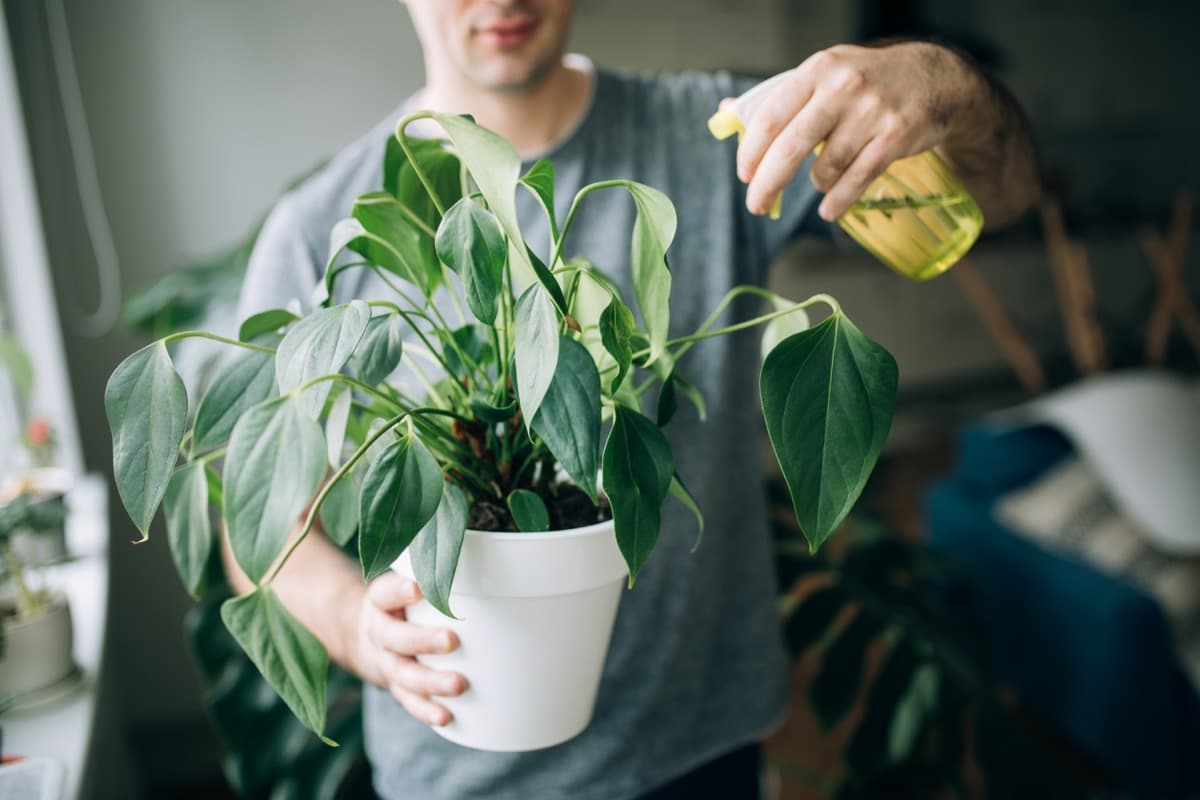

![How and When To Take Effective Rose Cuttings For Replanting [UK]](https://staging.thearches.co.uk/wp-content/uploads/How-To-Take-Rose-Cuttings-Effectively.jpg)